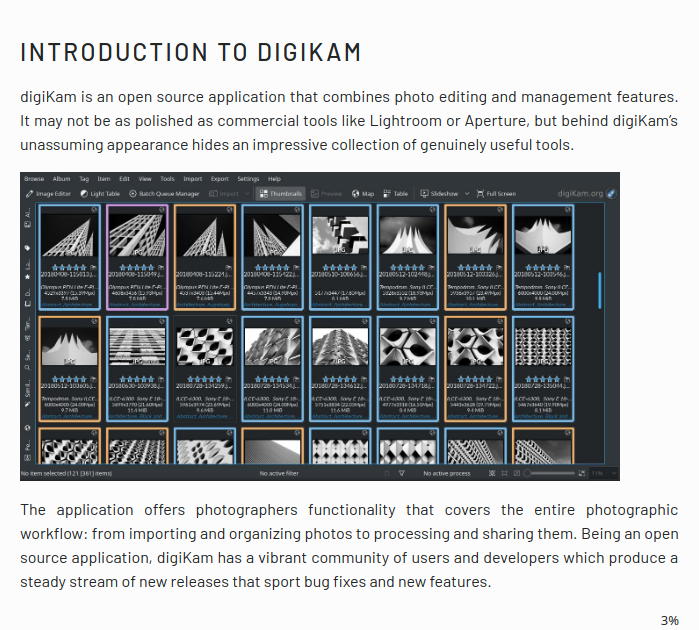
The new version of digiKam adds some new buttons in the left sidebar, which I will look at in more detail later. A second mouse click on the same button hides the left bar and thus expands the main window. Whatever you enable by clicking on the appropriate button in the left bar is displayed by digiKam in the central main window. This structure has proven its value.įigure 1: Structured design: On the left, select the source of the images that appear at the center the details are shown on the right.Īlong the left edge, you choose between individual albums (i.e., folders in the filesystem), keywords, (Exif) data, or search results. The main window is divided into three panels ( Figure 1): the image source (e.g., an album), the images it contains, and the details of the image(s) selected in the current folder or album.

The Old and the NewĭigiKam is based on a simple, clear-cut concept that is reflected in the design. In this article, I'll take a detailed look at the fifth generation of digiKam. Also new in v5.4 is the Maintenance tool (which runs processes in the background to maintain image collections and database contents) in the Tools menu. Version 5.1, the version used for this article, fixed a number of bugs versions 5.2-5.4 made several improvements to the similarity search engine and include a complete re-write of video file support. Version 5 largely replaces KDE dependencies with dependencies on Qt5 and introduces a number of new features. The freshly published digiKam 5 ditches a fair amount of ballast and includes a number of conceptual changes, as well as many smaller additions.
#Define digikam software
The idea is not only to make the images accessible by filename, but in many other ways, as well, such as by time of recording, by keyword, or by geographic location.įor years, digiKam has been considered the most important free software for managing and manipulate large volumes of images. The OS is on it's own SSD.If you have more than just a few snapshots in your photo archive, you need powerful software to manage them.
#Define digikam Offline
This is backed up to an online backup disk daily, and offline USB-disks weekly (the offlines are a set which are rotated out of the house). So all my data to one easy to backup volume.

The folder /usr/local is actually a bind mount of /home/local. I aim to keep all my stuff in /home or /usr/local. The backup script uses notify-send to inform the desktop that the backup is in progress or is being skipped due to to digikam being active - that way I only create consistent backups, and I won't accidentally start digikam until the backup finishes. This helps if anything goes badly wrong with the database/config files (which has only ever happened once due to a mistake I made when playing with digikam settings). On each login (approximately once per day) I have a backup script that checks if digikam is running, if not it backs up the database folder and other config files to a tar. Eventually I bought a 2 TB SSD which could easily fit my photos, the database, and all my other accumulated non-photography stuff. I switched to mariadb on SSD when the photos on the disk grew beyond 500 GB and the scans for new items started to take a large amount of time. I have digikam using mariadb with the database stored in a folder in my home directory which is on SSD.


 0 kommentar(er)
0 kommentar(er)
